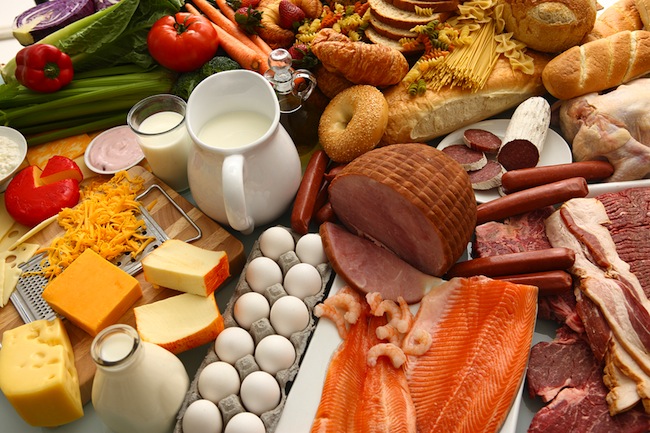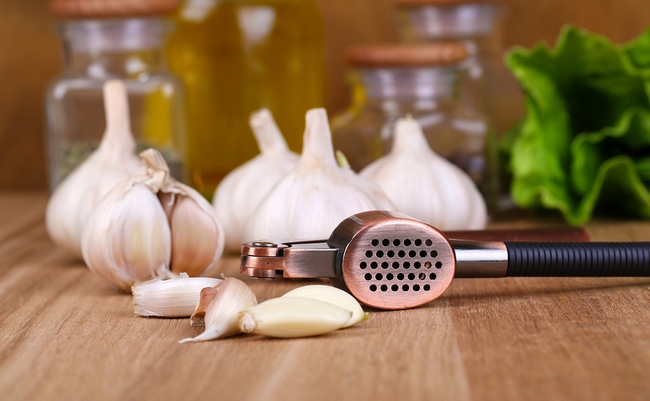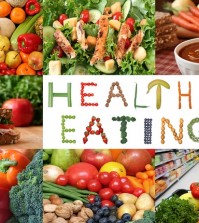- Make It Yourself Lavender Heart-Shaped Bath Bombs!
- 20 Things You Never Knew About “Down There”
- 12 Best Foods For Those Suffering From Arthritis Pain
- 12 Personal Hygiene Mistakes Almost Everyone Makes (Mom Never Told You About #4!)
- 15 Medicinal Plants And Herbs From The Cherokee People
- 12 Mind-Blowing Benefits Of Drinking Coconut Water During Pregnancy
- 12 Outstanding Winter Foods That Won’t Fatten You Up Like A Christmas Turkey
Beware Of Foods Made In China That Are Fake Or Filled With Toxins

Photo credit: bigstock.com
You might have read recently about pets that consumed treats or toys which were made in China, and later these pets died horrible deaths from toxins used in these products. Or you might have heard about certain products, such as toothpaste or dish soap that contained dangerous toxins that are not allowed in products which are made in America.
Did you know that those are simply the tip of the iceberg? There have been a rash of stories lately about downright dangerous products that are being imported from China. These range from factory farmed fish to plastic food. Yep, you read that right. Plastic. Food. Even baby food isn’t safe!
China appears to be all about making it cheap. Period. They don’t seem to care about health, let alone safety, only the bottom line. The innovative methods of the Chinese may have brought us super inexpensive computers and other products, but all this brain power and innovation is being applied to food as well which is unhealthy at best, and dangerous at worst.
Want to know which are the worst examples regarding food imported from China? Keep reading. We are going to fill you in on which items you absolutely must read the country of origin label so that you can avoid eating plastic food or worse!
1. Pork Becomes Beef
In China, pork is much cheaper than beef, which is why many restaurants try to pass off pork as beef by covering it up with sauces. However, before they ship canned “beef” to America, they first use a beef extract and glazing product. They soak the meat in this solution for a few hours, after which, it allows the pork to appear like beef. What exactly is in this beef extract and glazing agent? We aren’t exactly sure but anything that is being passed off as something it is not should be avoided. After all, perhaps this isn’t even pork any more that they are passing off on us. Dogs are commonly eaten in China. Enough said.
2. Eggs
If you take a look around the internet, it is not difficult to find websites from China that claim you can make as much as $70 dollars a day or more by making and selling fake eggs. The eggs shells are made from calcium carbonate. The “eggs” are made from potassium alum. Alginic acid, calcium chloride, artificial color and water. Sounds appetizing, does it not? Worse, still- eating these chemical eggs can cause brain damage including memory loss and dementia.
3. Peas
We don’t mean the usual snow peas from China, but what we in America would simply call green peas. China is making fake green peas by mixing snow peas, soy beans, a bleaching agent that works as a preservative called sodium metabisulfite, and a green dye that is banned in the US. The dye causes cancer and inhibits the body’s ability to absorb calcium. These peas do not become softer when they are boiled and you will instantly know that there is something wrong with these peas as they turn the water an unnatural green color. Avoid peas from China!
Continue to Page 2

Photo credit: bigstock
4. Black Pepper
Believe it or not, some unscrupulous people are collecting mud and selling it as black pepper. They are also using flour, mixed with an untold substance, and selling it as white pepper. The Chinese do not have strict laws or a means of enforcing them, at least when it comes to their food safety laws.
5. Chicken
The U.S. Department of Agriculture approved the sale of chicken from China in 2013. As you might expect, food safety experts are quite concerned with the quality of these chickens as many cases of avian influenza and food borne illnesses originate in China. Also, China produces more pesticides than any other country on the planet. This has left the country polluted on a massive scale. There have been no reports as of yet, but it is only a matter of time.
6. Mushrooms
Unfortunately, US food inspectors have found tainted mushrooms from China. In fact, some of these mushrooms are labeled as “organic” so that the Chinese manufacturers can ask a higher price. A quick Google search of “mystery mushrooms from China” will give you tons of hits describing everything from completely fake mushrooms to dangerously contaminated mushrooms labeled as organic. It’s always best to know your source. Buy local, organic mushrooms from your local farmer’s market!
7. Tilapia
This fish is a factory farmed fish in China. These have been tested and found to be some of the unhealthiest, most toxic fish you can imagine. Since by nature tilapia eats almost anything, it is similar to catfish. The difference is that the Chinese keep these fish in shallow pools of waste water. Yes, what you are imagining is exactly what this is! These fish are so disgusting that they don’t sell them in China! They only export them. To us. About 80 percent of the Tilapia sold in America come from China. Avoid this fish unless you know where it comes from.
8. Apple Juice
You might wonder how they can screw up apple juice but even something this pure and simple is contaminated by pesticides. China produces more pesticides than anyone else in the world. Even non-organic apples in America are filled with pesticides, imagine what apples from China contain?!
9. Cod
Like Tilapia, cod is a factory farmed fish in China. Cod is also kept in very small ponds and lives in its own waste. About 50 percent of all cod sold in America comes from China. This type of fish tends to be sold in processed foods such as fish sticks or frozen dinners. Avoid any type of fish that comes from China.
Continue to Page 3

Photo credit: bigstock.com
10. Garlic
Garlic from China is liberally sprayed with everything from pesticides to preservatives. This gives garlic from China a distinctly bitter aftertaste. Approximately 30 percent of all garlic sold in the US comes from China. You should also be wary of spices such as garlic salt or garlic pepper as these can contain garlic from China. Always buy from reputable companies or use fresh, organic garlic from your local farmer’s market.
11. Rice
You might not believe this, but the Chinese are even trying to pass off fake products as rice. One study found that potatoes were being sold as rice. A more troubling discovery was that tiny pieces of plastic, mixed with a synthetic resin, was being sold as rice! This is downright scary! Consuming plastic is something no one should ever have to deal with! Avoid rice, and rice products, from China.
12. Salt
As cheap as salt is, you might wonder why anyone would bother to sell fake stuff, but the truth is that China has been passing off industrial grade salt as table salt. Industrial grade salt is used for things like water softeners and de-icing streets. It is not fit for human consumption as it causes issues with the thyroid, mental problems and even severe physical reactions. Read labels, friends, and avoid those cheap table salts from China and the dollar stores.
13. Sweet Potato Noodles
At least one facility based in Zhongshan City, China, produced about 5.5 tons of fake noodles. These were supposed to be sweet potato noodles but when people began complaining that their noodles tasted strange, a test found that these were not noodles made from sweet potatoes, but were corn dyed with an industrial ink to give them their purple color and wax. Yuck. Although this factory was put out of business in 2011, perhaps some of these noodles are still floating around. Or perhaps someone else in China decided to steal this idea, who knows?
14. Baby Formula
Yes, even formula isn’t safe. Formulas from China have few nutrients and were likely made with a great deal of chalk. Formula from China has been linked to “big head disease”, which causes the head to grow at an accelerated rate but the body to deteriorate.
READ ALSO: You Won’t Believe the Toxins in Your Vitamins, Supplements, and Health Foods
How can you tell if some of your favorite foods are from China? While some foods give you a definite clue, such as the peas, others have little or no sign. This is why you should be shopping locally at your farmer’s market as much as possible and growing some foods at home. Always buy organic and if you have any doubt, read the country of origin label.
References:

































